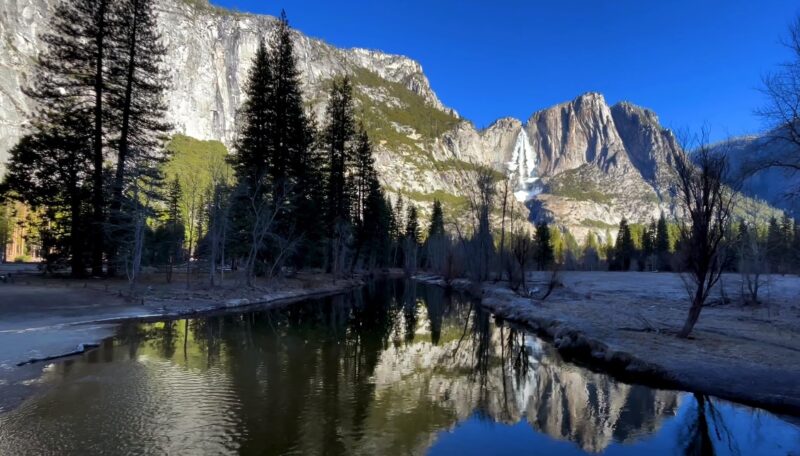Yosemite National Park is one of the most popular and scenic destinations in the United States, attracting millions of visitors every year. However, it is also a vast and rugged wilderness, with many potential hazards and challenges for hikers.
In this blog post, we will explore the question of how many hikers have gone missing in Yosemite, what are the possible causes and risks, and how to prevent and prepare for such situations.
What Are The Known Cases?
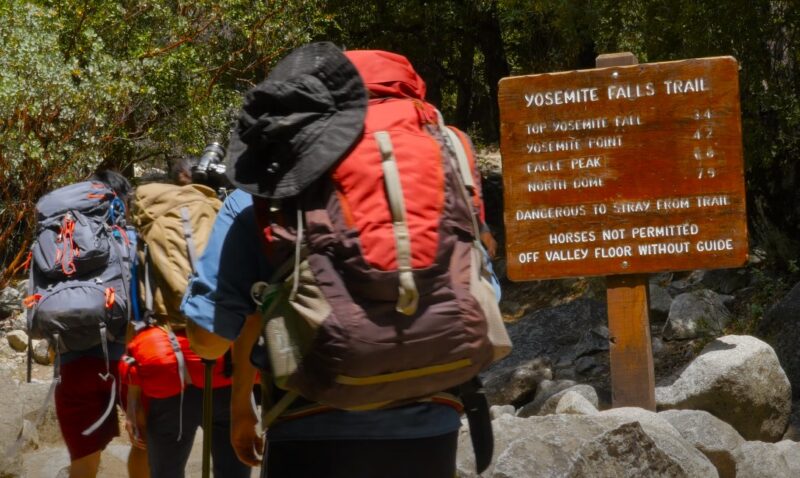
According to the National Park Service website, there are more than 30 missing persons cases in Yosemite National Park dating back to 1909. However, the exact number of hikers who have gone missing in Yosemite is not clear, as some of the cases may involve other activities such as climbing, skiing, or swimming.
Unfortunately, we can see similar cases in other popular places, like the Appalachian Trail. Some of the missing persons may have also left the park voluntarily or met with foul play.
The most recent case of a hiker who went missing in Yosemite is Hayden Klemenok, who was last seen on July 2, 2023, near Upper Chilnualna Falls. He entered the Chilnualna Creek and was swept away by the fast-flowing water. Despite extensive search efforts, he has not been found yet.
Possible Causes and Risks
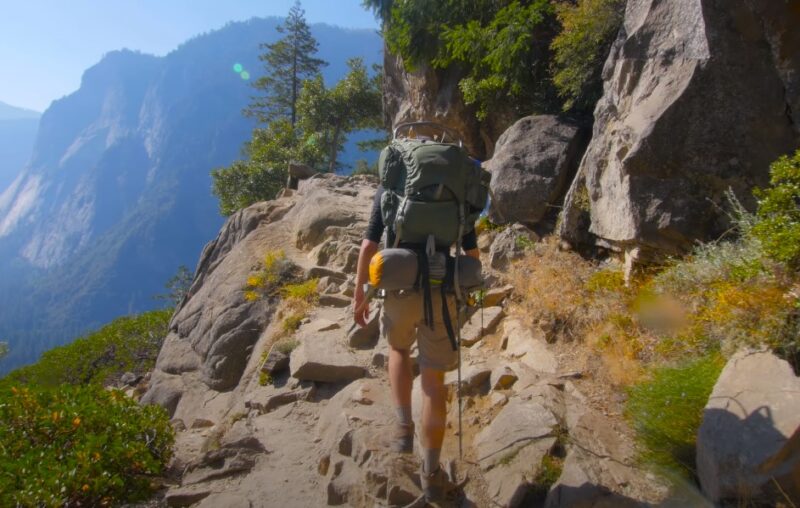
- Weather and terrain: Yosemite has a diverse and dynamic climate, with sudden changes in temperature, precipitation, and visibility. The park also has steep and rocky trails, slippery slopes, and deep canyons, which can pose challenges and dangers for hikers. There was a case in 2011 where three hikers were swept over Vernal Fall after climbing over a safety railing to take photos.
- Water hazards: Yosemite has many rivers, creeks, lakes, and waterfalls, which can be tempting for hikers to cool off or enjoy the scenery. However, the water can also be very cold, swift, and powerful, especially during the spring and summer when the snow melts. Hikers can easily lose their footing, get hypothermia, or drown in the water.
- Wildlife encounters: Yosemite is home to many wild animals, such as bears, mountain lions, rattlesnakes, and coyotes, which can be dangerous or aggressive if provoked or startled. Hikers should always keep a safe distance from wildlife, store their food properly, and carry bear spray or other deterrents. Another case happened in 2012, when a hiker was fatally mauled by a mountain lion near Wawona.
- Human factors: Hikers can also go missing in Yosemite due to their own actions or decisions, such as wandering off the trail, getting lost, injuring themselves, or running out of supplies. Hikers should always plan ahead, carry a map and compass, stay on the marked paths, and let someone know their itinerary.
How to Prepare for Hiking and Prevent Potential Dangers?
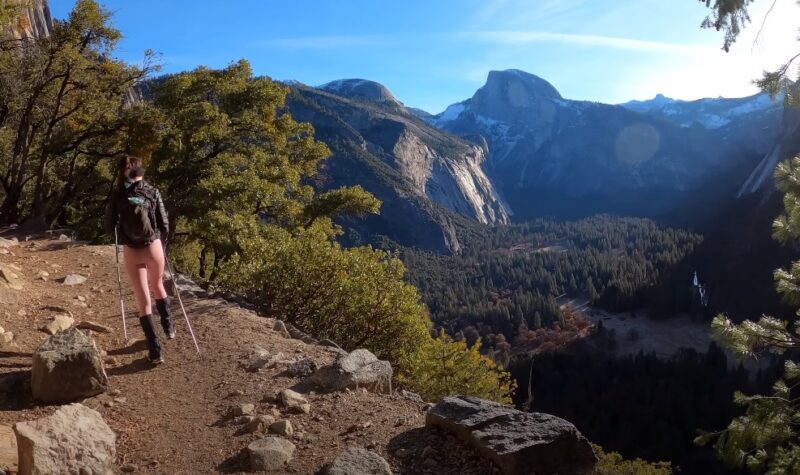
Hiking in Yosemite can be a rewarding and enjoyable experience, but it also requires caution and preparation. Here are some tips to help you prevent and prepare for hiking emergencies in Yosemite:
- Check the weather and trail conditions: Before you go hiking, check the weather forecast and the trail conditions on the park website or at a visitor center. Avoid hiking in extreme heat, cold, rain, or snow, and be prepared for any changes in the weather. Choose a trail that matches your fitness level and experience, and avoid hiking alone or at night.
- Carry the essentials: Pack a backpack with the essentials for hiking, such as water, food, clothing, first aid kit, flashlight, whistle, knife, matches, and sunscreen. Carry enough water to stay hydrated, and drink at least one quart every two hours. It is important to have a headlamp on every hike, even short day hikes, in case you get delayed or lost. Bring a whistle to signal for help, and a knife or matches to start a fire if needed.
- Use a map and compass: Do not rely on your cell phone or GPS, as they may not work in remote areas or run out of battery. Stay on the established trail, and do not take shortcuts or explore off-trail. If you get lost, stay calm and stay put, and try to find a visible and sheltered spot to wait for help.
- Inform someone of your plans: Let someone know where you are going, when you plan to return, and what to do if you do not. Leave a note in your car or at your campsite with your name, destination, and expected return time. Register at a trailhead or wilderness permit station if available. If you change your plans, update your contact person as soon as possible.
- Be aware of your surroundings: Pay attention to your surroundings, and watch out for any hazards or signs of trouble. Be alert for any wildlife, and do not approach or feed them. Be careful near water, and do not enter or cross any rivers or creeks that are high, fast, or cold. Be mindful of your physical and mental condition, and do not push yourself beyond your limits. Take breaks, rest, and eat regularly.
Tips To Ensure the Best Hiking Experience
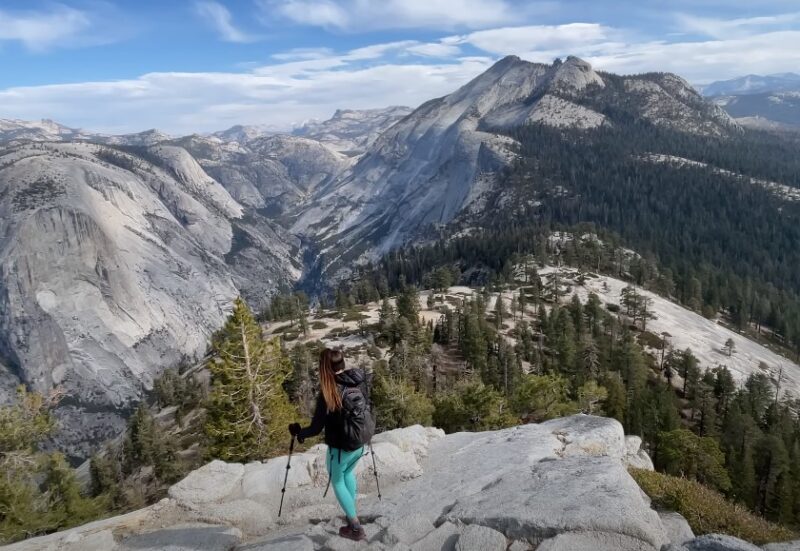
Yosemite National Park is a wonderful place to explore the natural beauty and diversity of this amazing place. However, hiking also requires some preparation and precautions to ensure a safe and enjoyable experience. Here are some tips to help you have the best hiking experience in Yosemite:
- Pick a hike that matches your level and interest: A variety of hikes are available in Yosemite, from easy strolls to challenging climbs, from scenic views to hidden gems, from waterfalls to meadows. Advice from the park rangers or visitor centers can also help you choose a hike that suits your physical ability, time availability, and personal preference.
- Prepare for the weather and trail conditions: The weather in Yosemite can change quickly and dramatically, especially at higher elevations. Before you go hiking, you should check the weather forecast and be prepared for any possible changes. The trail conditions should also be checked, as some trails may be closed or inaccessible due to snow, ice, rockfall, fire, or other hazards. The current trail conditions can be found on the [Yosemite Hikes website] or at the visitor centers.
- Pack the essentials and leave no trace: The essentials for hiking, such as water, food, clothing, first aid kit, flashlight, whistle, knife, matches, and sunscreen, should always be packed. A map and compass should also be carried, and you should know how to use them. The leave no trace principles should also be followed, which means you should respect the park and its wildlife, and leave nothing behind. All your trash should be packed out, and disposed of properly. Feeding or approaching any animals should be avoided, and your food should be stored securely in bear-proof containers or lockers.
FAQs
How do I get a wilderness permit for hiking in Yosemite?
A wilderness permit is required for any overnight stay in the Yosemite wilderness. You can get a wilderness permit by applying online, by phone, or in person at a wilderness permit station. You can find more information on the [National Park Service website].
What are some of the best hikes in Yosemite for beginners?
Some of the best hikes in Yosemite for beginners are the Lower Yosemite Fall Trail, the Mirror Lake Loop, the Bridalveil Fall Trail, and the Mariposa Grove of Giant Sequoias. These hikes are easy, short, and offer stunning views of the park’s features. You can find more details on these and other hikes on the [Lonely Planet website].
What are the dangers and challenges of hiking in Yosemite?
Hiking in Yosemite can be dangerous and challenging due to various factors, such as weather and terrain, water hazards, wildlife encounters, and human factors. You should be prepared for any emergencies that may arise, and follow the tips and precautions mentioned in this blog post.
How to prevent and prepare for hiking emergencies in Yosemite?
You can prevent and prepare for hiking emergencies in Yosemite by following these tips: check the weather and trail conditions, carry the essentials, use a map and compass, inform someone of your plans, and be aware of your surroundings. You should also follow the leave no trace principles, and respect the park and its wildlife.
What should I do if I encounter a bear or a mountain lion in Yosemite?
If you encounter a bear or a mountain lion in Yosemite, you should stay calm and do not run. You should make yourself look big and loud, and slowly back away. You should also carry bear spray or other deterrents, and use them if necessary. You should report any incidents to the park rangers as soon as possible.
What is the best time and season to hike in Yosemite?
The best time and season to hike in Yosemite depends on your preference and the trail you choose. Generally, spring and fall are the best seasons to hike in Yosemite, as they offer mild temperatures, fewer crowds, and beautiful scenery. However, some trails may be closed or inaccessible due to snow or ice.
Summary
Hiking in Yosemite National Park can be an amazing adventure, but it also comes with risks and responsibilities. By following the tips and precautions mentioned in this article, you can reduce the chances of going missing in Yosemite, and be ready for any emergencies that may arise. Remember to respect the park and its wildlife, and enjoy the beauty and wonder of Yosemite.
